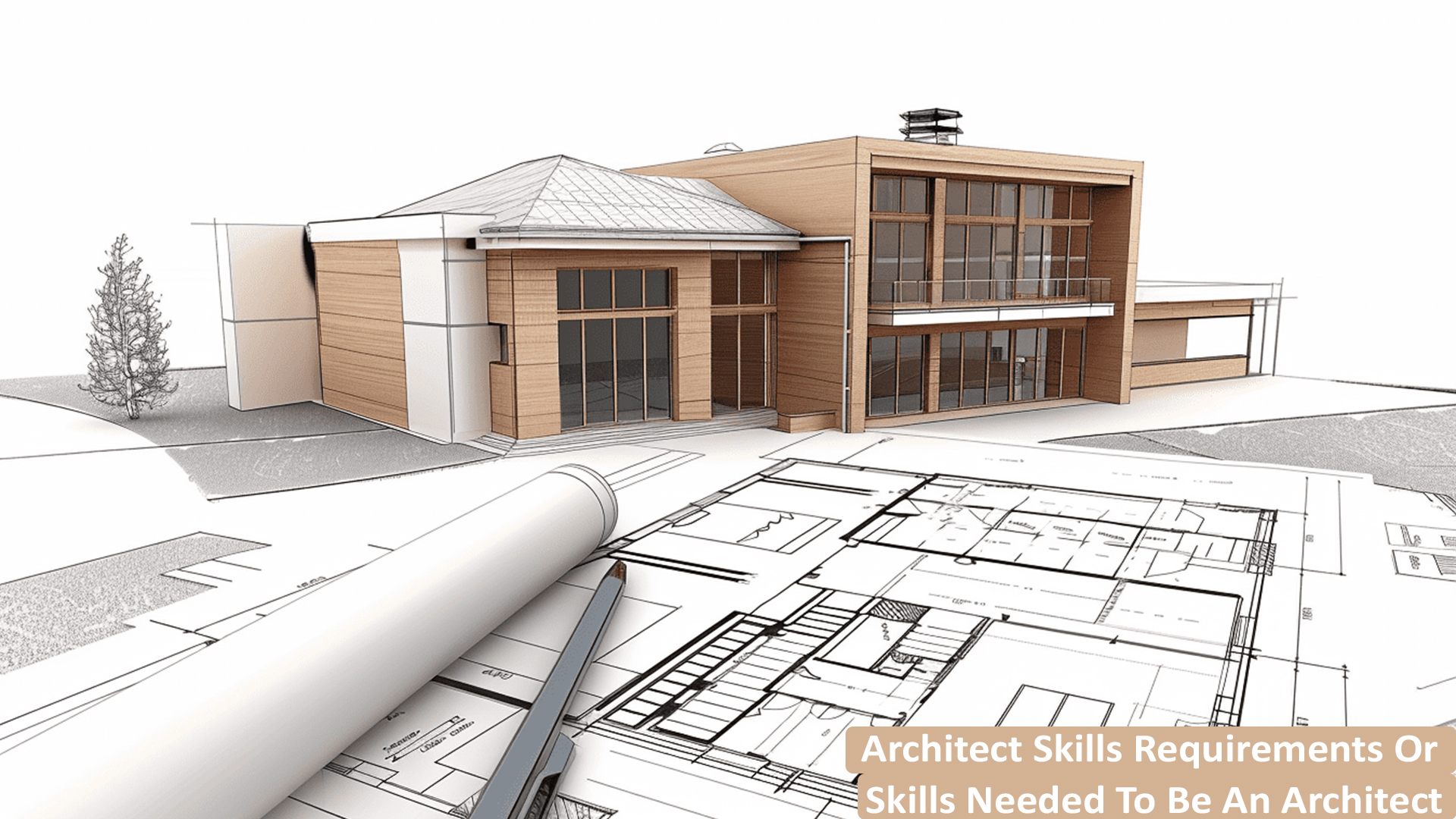Architect Salary Breakdown by Location and Seniority
Architect Salary Breakdown by Location and Seniority
Blog Article
Understanding the Diverse Occupation Paths Available for Aspiring Architect
As an aspiring Architect, you have a world of job courses waiting for you. Whether you're drawn to standard architecture or the subtleties of sustainable design, there's a niche that aligns with your interests.
Traditional Style: Designing Structures and Structures
Standard style focuses on designing structures and structures that mix capability with visual allure. Your layouts can mirror social heritage, showcasing local practices while meeting contemporary demands.
You'll establish abilities in preparing, model-making, and website evaluation, enabling you to envision and communicate your concepts properly. Engaging with clients, you'll require to understand their vision and equate it right into feasible layouts.
Furthermore, developing codes and sustainability practices are vital in your work, ensuring your frameworks are eco pleasant and safe. As you expand in your career, you'll discover possibilities in domestic, business, or even restoration tasks, each offering distinct obstacles. Embracing typical architecture leads the way for a satisfying job that admires the past while forming the future.
Urban Planning: Shaping Neighborhoods and Public Spaces
As an ambitious Architect, you can play a necessary function as a city organizer, transforming exactly how areas work and interact. By using neighborhood involvement approaches, you'll guarantee that residents have a voice in shaping their setting. And also, incorporating sustainable style concepts will certainly help produce rooms that not only fulfill today's demands however also secure the future.
Duty of Urban Planners
While several may think about architects as the single visionaries behind structures, city organizers play an important role fit the wider landscape of neighborhoods and public rooms. They evaluate land use, zoning regulations, and area needs to produce lasting settings that boost lifestyle. By teaming up with numerous stakeholders, you'll assist create parks, transportation systems, and houses that advertise social interaction and availability. Urban coordinators likewise concentrate on ecological considerations, ensuring that advancements integrate green spaces and assistance biodiversity. Your experience in spatial design and community dynamics permits you to picture future growth while protecting cultural heritage. In this essential role, you'll straight affect just how individuals experience their surroundings, making every job a possibility for positive change.
Neighborhood Involvement Approaches
Reliable neighborhood interaction approaches are essential for metropolitan organizers to assure that the voices of locals are listened to and valued in the preparation procedure. To foster purposeful discussion, you must focus on open discussion forums and workshops where community members can reveal their ideas and concerns. By proactively incorporating and listening comments, you'll produce rooms that mirror the community's demands, inevitably leading to even more effective and lasting city settings.
Sustainable Style Concepts
When creating city rooms, incorporating lasting design concepts is essential for producing settings that flourish both ecologically and socially. You should start by concentrating on energy effectiveness, utilizing materials that decrease waste and advertise recycling. Take into consideration incorporating green rooms, like parks and yards, to improve biodiversity and boost air high quality. Promoting walkability and public transport can lessen dependence on cars and trucks, fostering a healthier community.
Creating with water preservation in mind is additionally vital-- consider rainfall gardens and permeable surface areas to manage stormwater. Entailing neighborhood members during the preparation process warranties that the areas you create meet their needs and encourage social communication. By welcoming these concepts, you'll add to lively, sustainable metropolitan landscapes that benefit everybody.

Landscape Style: Developing Sustainable Outdoor Settings
As you discover landscape design, you'll discover essential layout concepts that develop stunning and practical exterior rooms. Lasting methods play an essential role in making certain these settings grow while decreasing ecological effect. Plus, you'll discover a variety of occupation possibilities that permit you to make a real difference in exactly how people engage with nature.
Layout Concepts in Landscape
Comprehending layout concepts in landscape style is important for producing lasting exterior settings that integrate with nature. You'll require to contemplate elements like scale, percentage, and equilibrium to ensure your layouts really feel natural and welcoming. In addition, pay interest to seasonal adjustments, developing with materials that complement the surroundings year-round.
Lasting Practices Review
Sustainable practices in landscape design not only focus on appearances yet additionally prioritize environmental health and wellness and resource conservation. By incorporating indigenous plants, you improve biodiversity and decrease the need for chemical fertilizers and pesticides. Carrying out efficient watering systems aids save water and reduces drainage, securing neighboring ecological communities. You can create areas that promote dirt health and wellness, such as exercising and utilizing organic materials permaculture concepts. Furthermore, incorporating green framework, like rain gardens and permeable pavements, help in stormwater administration and decreases city warm. When you develop exterior settings with sustainability in mind, you add to a healthier world and provide rooms that foster area connection. Eventually, these methods ensure your layouts profit both people and the environment for years to come.
Occupation Opportunities Expedition
With a solid foundation in sustainable techniques, landscape design supplies a range of career paths that allow you to make a significant effect on the environment. Urban organizers usually team up with landscape designers to develop environment-friendly areas in urban setups, improving city livability. If you're passionate about education and learning, think about becoming a landscape style teacher, motivating future generations.
Sustainable Style: Focusing on Eco-Friendly Practices
As you discover your occupation in architecture, welcoming environmentally friendly practices can establish you apart in a competitive area. Sustainable style focuses on creating buildings that reduce ecological influence while boosting owner health. By incorporating eco-friendly materials, energy-efficient systems, and lasting building strategies, you'll Architect contribute to a greener future.
Beginning by gaining understanding Architect of environment-friendly accreditations like LEED or BREEAM, which can bolster your qualifications. Think about just how natural light, ventilation, and thermal performance can optimize layout. Collaborate with designers and ecological experts to innovate options that minimize waste and save sources.
Don't neglect the importance of area participation-- interesting neighborhood stakeholders can influence designs that integrate with the environment. As clients increasingly focus on sustainability, your experience in green practices will not only draw in tasks yet also satisfy your enthusiasm for accountable style. Welcome this important facet of the career, and see your job flourish.
Historic Conservation: Safeguarding and Bring Back Cultural Heritage
While you begin on your architectural trip, take into consideration the essential role of historical conservation in keeping our cultural heritage. This area concentrates on the security and repair of substantial structures, websites, and frameworks that inform the tales of our past. By participating in historic preservation, you'll help secure the building tradition that shapes community identification.
As a historic conservation Architect, you'll evaluate historic relevance and evaluate the condition of frameworks. You'll work carefully with preservationists and chroniclers to guarantee genuine reconstruction strategies are utilized. This career path allows you to mix creativity with study, enabling you to make options that value original products and craftsmanship.
Your job not only adds to sustainability by recycling existing buildings however also promotes a feeling of pride within areas. Accepting this path will certainly help you end up being a guardian of history, protecting the tales and looks that improve our lives.
Interior Design: Enhancing Indoor Spaces
Historical preservation and indoor style both share a dedication to improving the built atmosphere, but they concentrate on various facets. While historic conservation emphasizes preserving a framework's historic and social value, interior design absolutely nos in on enhancing indoor areas for functionality and aesthetics.
As a hopeful Architect, you'll find that indoor style enables you to blend creative thinking with technical skills. You'll design spaces that not only look great yet also promote comfort and effectiveness. This area involves understanding exactly how light, color, and products engage within a room, influencing state of mind and use.
You'll function on various projects, from household homes to industrial offices, making sure that each setting fulfills the requirements of its residents. By focusing on individual experience, you can transform insides right into inspiring and functional spaces, making a significant impact on just how individuals connect with their environments. Welcome the possibility to boost interior environments and form the way people function and live.
Industrial Layout: Combining Functionality With Aesthetics
Industrial layout plays an essential role in developing items that flawlessly mix looks with performance, guaranteeing that what you use daily is not just aesthetically enticing however also practical. As an ambitious Architect, you can involve on your own more info in this field, concentrating on making whatever from furniture to consumer electronic devices. Your job involves recognizing customer demands, materials, and manufacturing procedures, allowing you to develop ingenious services that enhance day-to-day experiences.
In industrial layout, you'll often work together with marketing experts, makers, and designers, ensuring that your layouts are not only beautiful however additionally viable. You'll discover to stabilize kind and function, prioritizing usability without sacrificing style. By refining your abilities in sketching, 3D modeling, and prototyping, you'll be well-appointed to bring your ideas to life. This job path provides a vibrant setting where creativity satisfies practicality, making it a gratifying choice for designers curious about forming the items of tomorrow.
Often Asked Questions
What Educational Qualifications Do I Required to Come To Be an Architect?
To become an engineer, you'll require a professional degree in style, normally a Bachelor's or Master's. Additionally, you'll have to finish an internship and pass the Architect Registration Exam to practice legitimately.
Exist Qualification Needs for Various Architectural Occupation Paths?
Yes, there're accreditation needs for different architectural courses. Architect. You'll require to pass exams, complete internships, and occasionally pursue specialized training, depending upon your chosen emphasis, like landscape style, metropolitan layout, or historic conservation
What Software Application Abilities Are Important for Designers Today?

Exactly How Can I Gain Practical Experience While Examining Architecture?
You can obtain functional experience by interning at architectural companies, taking part in design competitors, volunteering for area jobs, or collaborating with schoolmates on real-world projects. These opportunities improve your skills and develop useful connections in the sector.
What Task Opportunities Exist Outside Standard Architecture Firms?
You can discover different job chances outside traditional design firms, like metropolitan preparation, interior decoration, landscape style, building and construction administration, property advancement, or perhaps duties in sustainability consulting. Each deals special challenges and benefits.
Whether you're attracted to standard style or the subtleties of sustainable layout, there's a specific niche that lines up with your passions.When developing metropolitan rooms, integrating lasting design concepts is vital for creating atmospheres that prosper both environmentally and socially.As you explore landscape style, you'll discover vital layout concepts that create lovely and useful outdoor areas.Recognizing layout concepts in landscape architecture is important for creating lasting outside settings that integrate with nature.In commercial design, you'll typically work together with manufacturers, marketing experts, and engineers, guaranteeing that your designs are not only stunning however also possible.
Report this page